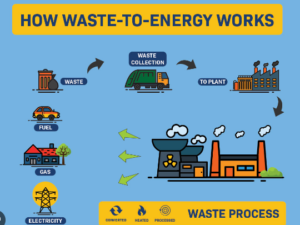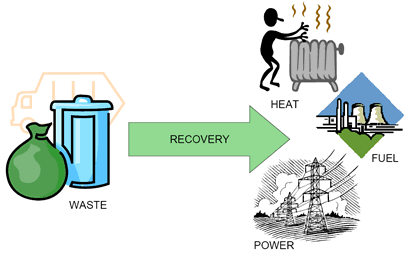In today’s fast-paced world, the ever-increasing generation of waste has become a pressing concern. The environmental consequences of landfills and the depletion of natural resources have spurred the need for innovative and sustainable solutions. One such solution is converting waste to energy. This article explores the various facets of waste-to-energy technology, shedding light on its environmental benefits, economic viability, and its role in mitigating the global energy crisis.
The Environmental Imperative
First and foremost, the conversion of waste to energy addresses the mounting environmental crisis. Landfills, the traditional method of waste disposal, contribute significantly to greenhouse gas emissions and soil contamination. Conversely, waste-to-energy facilities reduce the volume of waste sent to landfills while generating clean and renewable energy. This shift mitigates the harmful impact of landfill sites on our environment.
Reducing Carbon Footprint
Moreover, waste-to-energy technologies play a pivotal role in reducing carbon emissions. Transitioning from fossil fuels to sustainable energy sources is essential to combat climate change. By converting waste into energy through processes such as incineration or gasification, we can harness the energy trapped within waste materials, displacing the need for fossil fuels and curbing carbon dioxide emissions.
Economic Viability
In addition to its environmental benefits, waste-to-energy projects have proven to be economically viable. By monetizing waste materials and creating a revenue stream from the energy produced, these projects offer a sustainable solution to waste management. Municipalities and private enterprises alike can benefit from the economic opportunities that waste-to-energy technology presents.

Energy Security
Energy security is another critical aspect of waste-to-energy conversion. As the global population continues to grow, the demand for energy is at an all-time high. Conventional energy sources are finite and subject to geopolitical tensions. Waste-to-energy provides a decentralized and reliable energy source, reducing our dependence on fossil fuels and ensuring a more secure energy future.
Technological Advancements
Recent technological advancements have further enhanced the efficiency and sustainability of waste-to-energy systems. High-temperature incineration, for instance, can convert waste into electricity with minimal environmental impact. Gasification processes, on the other hand, can produce synthetic gas or biofuels from organic waste materials. These innovations are transforming waste into a valuable resource.
Resource Recovery
Waste-to-energy facilities are not limited to just energy generation. They also facilitate resource recovery through the extraction of recyclable materials and metals from waste streams. This dual approach maximizes the utilization of waste materials, reducing the overall environmental footprint and promoting a circular economy.
Reducing Land Usage
Traditional landfill sites consume vast areas of valuable land. Waste-to-energy facilities, on the other hand, are far more efficient in terms of land usage. By reducing the volume of waste sent to landfills, we can free up land for more sustainable and productive purposes, such as agriculture or conservation efforts.
Community Benefits
Waste-to-energy projects have the potential to bring numerous benefits to local communities. They create jobs, stimulate economic growth, and contribute to improved public health through reduced air and water pollution. Furthermore, by alleviating the need for landfills in proximity to residential areas, waste-to-energy facilities enhance the quality of life for surrounding communities.
A Step Towards Sustainability
In conclusion, converting waste to energy represents a significant step towards a more sustainable and environmentally friendly future. It addresses the urgent need to reduce our carbon footprint, provides a reliable and secure source of energy, and offers economic opportunities for communities. With ongoing advancements in technology and a growing awareness of environmental issues, waste-to-energy is poised to play a crucial role in our transition to a cleaner and greener world.
Conclusion
As we look ahead, it is evident that waste-to-energy technology is not just an alternative but a necessity. It aligns with the global commitment to reduce greenhouse gas emissions, transition to renewable energy sources, and create a more sustainable future for generations to come. With the continued development of innovative waste-to-energy solutions, we have the power to turn waste into a valuable resource and, in doing so, pave the way for a cleaner and brighter future.



